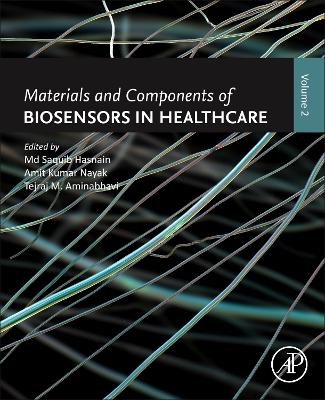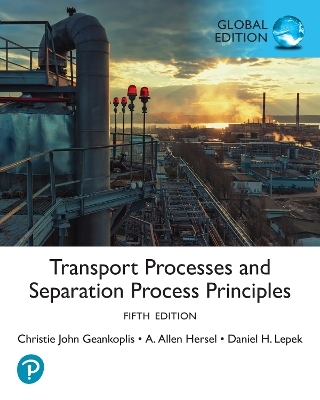
Materials and Components of Biosensors in Healthcare
Academic Press Inc (Verlag)
978-0-443-21676-3 (ISBN)
- Noch nicht erschienen (ca. Juni 2025)
- Versandkostenfrei innerhalb Deutschlands
- Auch auf Rechnung
- Verfügbarkeit in der Filiale vor Ort prüfen
- Artikel merken
Prof. (Dr.) Md Saquib Hasnain has over 13 years of research experience in the field of drug delivery and pharmaceutical formulation analyses, especially systematic development and characterization of diverse nanostructured drug delivery systems, controlled release drug delivery systems, bioenhanced drug delivery systems, nanomaterials and nanocomposites employing Quality by Design approaches and many more. Till date he has authored over 100 publications in various high impact peer-reviewed journals, more than 100 book chapters and 30 books to his credit. He is also serving as the reviewer of several prestigious journals. Overall, he has earned a highly impressive publishing and cited record. He has also participated and presented his research work at over ten conferences in India, and abroad. He was also a member of scientific societies i.e., Royal Society of Chemistry, Great Britain, International Association of Environmental and Analytical Chemistry, Switzerland and Swiss Chemical Society, Switzerland. Dr. Amit Kumar Nayak (MPharm, PhD) is working as a professor, at the Department of Pharmaceutics, School of Pharmaceutical Sciences, Siksha ‘O' Anusandhan (Deemed to be University), Odisha, India. He has earned his PhD from IFTM University, Moradabad, Uttar Pradesh, India. He has over 14 years of research experiences in the field of pharmaceutics, especially in the development and characterization of novel biopolymeric and nanostructured drug delivery systems. Till date, he has authored more than 138 research and review publications in various high-impact peer-reviewed journals and 135 book chapters. He has edited/authored 23 international books to his credit. Dr. Nayak has presented his research work at several conferences. He has received University Foundation Day Research Award, 2019 and 2022 by Biju Patnaik University of Technology, Odisha. Dr. Nayak is a life member of the Association of Pharmaceutical Teachers of India (APTI) and a registered pharmacist. Tejraj M. Aminabhavi is the Director of Research at the Center for Energy and Environment , School of Advanced Sciences, KLE Technological University, Hubballi, India. He works in the area of membrane transport processes, molecular modeling of polymer surfaces, wastewater treatment technologies, drug delivery polymers and sustainable environmental engineering.
1. Biosensor materials: An introduction
2. Biochemical components used in biosensor assemblies
3. Inorganic components used in biosensor assemblies
4. Biopolymers used in biosensor assemblies
5. Polymeric nanoparticles used in biosensors
6. Metallic nanoparticles used in biosensors
7. Gold nanoparticles used in biosensors
8. Silver nanoparticles used in biosensors
9. Magnetic nanoparticles used in biosensors
10. Iron nanoparticles used in biosensors
11. Zinc and zinc oxide nanoparticles used in biosensors
12. Cadmium nanoparticles used in biosensors
13. Carbon nanostructures used in biosensors
14. Carbon dots in biosensors
15. Carbon nanotubes in biosensors
16. Graphene based biosensors
17. Silica nanoparticles used in biosensors
18. Ceramic nanoparticles used in biosensors
19. Metallo-organic frame-works as biosensors
20. Nanocomposites used in biosensors
21. Electrospun nanofibers used in biosensors
22. Thin layers for biosensor applications
23. Lab-on-chip platform for biosensing
24. Microneedles used in biosensing
25. Bioconjugate materials used in biosensors
26. Biological cellular-structures used in biosensors
27. Nucleic acids used in biosensors
28. Lipid-based materials used in biosensors
29. Molecularly-imprinted nanostructures in biosensors
30. Nanotechnology-based liquid crystals used in biosensors
31. Electrochemical materials used in biosensors
32. Electromagnetic materials used in biosensors
33. Ultra-sound assisted biosensors
34. Current challenges and future prospects for synthesis of biosensing materials
| Erscheint lt. Verlag | 2.6.2025 |
|---|---|
| Verlagsort | San Diego |
| Sprache | englisch |
| Maße | 191 x 235 mm |
| Themenwelt | Technik ► Umwelttechnik / Biotechnologie |
| ISBN-10 | 0-443-21676-2 / 0443216762 |
| ISBN-13 | 978-0-443-21676-3 / 9780443216763 |
| Zustand | Neuware |
| Informationen gemäß Produktsicherheitsverordnung (GPSR) | |
| Haben Sie eine Frage zum Produkt? |
aus dem Bereich


